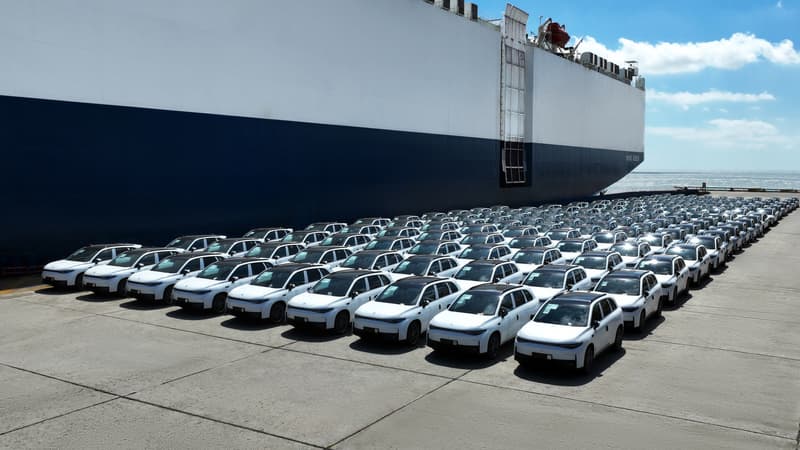At the Shanghai car
These models (called “rank exensors”, either EREV in English), are equipped with an electric battery and engines, but also with a small gasoline generator, which is not connected to the wheels and only feeds the battery if necessary. Therefore, the vehicle still drives in 100% electric mode, but consumes gasoline and emits toxic gases.
In 2024, it was this technology that experienced the greatest growth in China, all combined engines, exceeding one million units sold and representing a total of 6% market share, compared to 28% for electricity, says McKinsey firm.
And if it is still very rare elsewhere (BMW had offered it in its small electric i3), the situation could change. The Chinese partner of Stellantis, Leapmotor, launched his C10 SUV in Europe. Stellantis also plans to offer the United States an EREV version of its collection star, RAM 1,500. Volkswagen also intends to launch an EREV truck in the United States, under its brand explorer.
In the Shanghai show on Wednesday, the German group presented another large SUV equipped with an extension, which must be an element of its counteroffensive in the Chinese market.
Horse, the joint company of Renault and Chino Geely on the engines, presented an engine to install in an electric model.
Global expansion?
However, European market electrification is not as fast as expected, and Americans doubt even more.
Therefore, rechargeable hybrid models (equipped with a battery and a gasoline engine) look like manufacturers as a good transition solution: they contaminate less than a gasoline car if they are well recharged and assure motorists about the autonomy of their vehicle.
Automobiles with a variety of autonomy, which enter this category, are “a good way to reduce the cost of entry of people in electric mobility,” Volkswagen Oliver Blume chief of Shanghai said on Tuesday.
“But the electric will eventually win,” he added. “In a few years, the development of batteries will allow these autonomies in All-Electric.”
US needs versus European restrictions
According to McKinsey, these models allow manufacturers to offer vehicles with 100% electric autonomy that allows you to travel around 240 kilometers, for 3,000 dollars less than an electric car, since they take smaller batteries.
Once the concept has been presented, almost a quarter of those questioned in Europe and the United States plan to choose an EREV for their next purchase, said a survey published Tuesday by the firm.
“It is a real identified use for the United States, for very American needs,” said Sébastien Jacquet, Vice President of Stellantis engineering. Because they are suitable for long trips, but also “in vans to tow boats, for example. An electric vehicle has towing capabilities, but its battery is only 100 kilometers.”
The road seems free in the United States, where regulations do not impose a complete transition to the electric car. But in Europe, “there is 1,835 ax”, with the passage provided for a 100% electric market, says Alexandre Marian de los Alixpartners.
However, the EREV could find its place, if exceptions to non -electric but less polluting engines are admitted, requested in particular by Germany.
“Who would invest in factories (autonomy prolongers) in Europe if we know they will be deciduous in 2035?” “You have to solve this question very fast.”
Meanwhile, Westerners must trust their Chinese partners to prove the market.
Source: BFM TV


